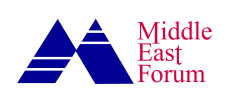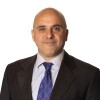In January, 2025, I conducted a two week visit to Syria. I spent half the time in Damascus, and the other half in the part of Syria east of the Euphrates River. I have been visiting and working in Syria regularly since 2012. I was particularly interested in returning at the present time because of the final defeat and collapse of the Assad regime in December, 2024, its replacement with the nascent Sunni Islamist regime of Ahmed Shara’a and Hayat Tahrir al Sham, and the consequent sense that the country was in a moment of historic transition.
I wanted to try to capture a sense of the different forces currently competing in Syria, since it is clear that the fall of Assad and the emergence of Islamist rule does not presage a new era of stability for the country. Rather, differing ideas and differing populations in the country appear set to continue to compete for power, space and influence. The precise form that this competition will take has not yet become clear. The photographs below are intended to reflect various aspects of the moment of ambiguity and transition in which Syria is currently to be found.
I am not a professional or especially talented photographer, as will be plainly apparent. I began to take photographs with a professional camera on my first reporting trip into Syria, in February 2012. The reason was that I couldn’t persuade any of the photographers of my acquaintance to join me, and I wanted to be able to provide both text and pictures as a single package to publications. It went better than expected, mainly because of the very dramatic nature of the subject matter, so I have kept at it.
This is the checkpoint formerly maintained by the Assad regime’s military intelligence service on Highway 42, leading from the Tabqa Dam to the city of Homs. It may be seen that 1. The checkpoint is now unmanned, and 2. Someone has placed a small rebel flag at its entrance to denote new ownership. We passed through this deserted position on our way to Damascus from the SDF controlled part of Syria. Its worth noting that this was one of a series of deserted former checkpoints that we drove through.
That Syria’s new rulers have not manned all these positions in the desert is, I think, an indication of one of their problems, namely, a lack of reliable manpower. The checkpoint itself showcases the fallen regime’s love of intimidating symbolism and painting its colors on any available surface. Now, with the regime deposed, the sight of symbols of its former strength reminded me of Percy Shelley’s ‘Ozymandias’:
‘“My name is Ozymandias, King of Kings:
Look on my works, ye Mighty, and despair!
Nothing beside remains. Round the decay
Of that colossal wreck, boundless and bare,
The lone and level sands stretch far away.”
Syria’s central desert is currently strewn with discarded instruments of war. This tank, which I think is a T62, seen on the road from Tabqa to Homs, is an example. We counted two heavy artillery pieces, five tanks, seven infantry fighting vehicles all abandoned by the roadside or in the middle of the desert. They appear as testimony to the speed with which the Assad regime collapsed, with its heavy weapons capabilities never brought to bear against the insurgent forces in the final days. It remains something of a mystery why the Syrian Arab Army collapsed as quickly as it did, though its weak and hollowed out nature was apparent to anyone who had spent any time close up to it. In the Tal Tamr area in 2019, for example, I saw regime soldiers begging neighboring SDF fighters for food and basic medications.
The entrance to the now derelict Saydnaya jail, close to Damascus. Two flags may be discerned immediately above the entrance. These are the flags of the Syrian regime to the right, and that of the Ba’ath Party to the left. The Ba’ath flag exactly resembles the flag currently used by the Palestinians. Inside the jail, we interviewed a former inmate who had been under a death sentence in the jail. He described the routine and daily killings that took place, and the practice of keeping prisoners isolated in 24 hour darkness, and fed with a single cup of rice per day. HTS fighters were also to be found wandering the area of the jail, though the guards at the entrance were restricting access to the general public. A smell of decay, human waste and rotting food was pervasive throughout the jail’s interior.
Supporters of the new regime gather on Jebel Qassioun, overlooking Damascus. These young women, my colleague told me, were speaking with the accents of Idlib Province, the north western governorate which formed the heartland of the HTS organization, and from where it set out on it march to Damascus in November/December, 2024. Jebel Qassioun, an imposing mountain which offers a panoramic view of the city, was kept closed to the public by the Assad regime throughout the period of civil war in Syria from 2012-24. As a result, its reopening became a focal point for people who wanted to celebrate the fall of the Assads. Idlibi and eastern Syrian accents and signs of Islamic observance were prevalent among those celebrating.
An HTS fighter is photographed by his female companion on Jebel Qassioun, with Damascus visible below. HTS fighters were to be found throughout the city, but usually not performing any official function. Rather, they were wandering around in twos or small groups, often receiving the congratulations or greetings of passers by. The absence of any visible police presence is a very notable aspect of Damascus at the present moment. It may also be worth noting that two separate HTS fighters that I approached in Saydnaya jail were non Syrians, and one of them had only a very rudimentary command of Arabic.
The famous Hamidiyeh Market in Damascus’ Old City. Now decorated with the rebel flag (which is the original flag of the Syrian republic, and now the flag of Syria once again). The wording above, which bestrides the main entrance to the market, praises HTS leader Ahmed Shara’a, the HTS leader.
The locked entrance to the Elfrange synagogue in Syria. Tho often depicted as the last functioning synagogue in Damascus, I found that the synagogue in fact no longer holds services. There are seven or eight remaining Jews in Damascus, all of them elderly people. The synagogue is maintained by a local Muslim man. There are two other non-functioning synagogues in this area, which was once the Jewish section of Damascus’s old city. In addition, the Jobar synagogue a couple of kilometers from the old city stood from early medieval times until it was destroyed by an Assad regime artillery shell during the civil war.
Female supporters of ISIS at the al-Hawl camp in northern Syria. The camp is maintained by the Syrian Democratic Forces, which is allied with the US-led coalition. There are 37000 residents of the camp, which houses the families of ISIS fighters. The residents are divided according to nationality, with Iraqis forming the largest group, followed by Syrians. My translator, who often visits the camp, told me that ISIS members have taken to saying or whispering ‘Qariban’ to members of staff, meaning ‘its close’, since the fall of the Assad regime. This is meant to convey the belief of the residents that they will imminently be freed by the new Islamist rulers of Syria, with whom they feel affinity. Prior to the downfall of the regime, escapes and attempted escapes from the camp to the HTS controlled Idlib area were common. Yezidi slaves held by residents of the camp were also smuggled out of the country via this area on a number of occasions.
The remaining wall of the synagogue at Jobar, destroyed during fighting between the regime and rebels. While photographing at the site, we were approached by two young men from HTS’s fledgling intelligence/security service, who told us that we were not allowed to photograph in this area.
Two female fighters of the Kurdish YPJ organization, photographed at their base in the Hasakeh area. The base is a new one, designed to serve as a central focus for this unit. There are pictures in the reception room of women who have been killed while fighting with the YPJ. Among the pictures, I noted the images of Ivana Hoffman and of Anna Campbell, two young women from Europe who were killed, Hoffman by ISIS and Campbell by the Turks. Ivana Hoffman was an activist with a far left party in Germany and Campbell was an anarchist. The Kurdish led authority is currently rejecting the new regime in Damascus’s demands that it dissolve itself and disband. Turkish supported Islamist fighters are engaged in combat against it in the Tishreen Dam and Qara Qozak bridge areas along the Euphrates. The Kurdish controlled area constitutes the largest zone currently outside of central government authority in Syria.
Prediction is a fool’s game in Syria, as HTS’s march to Damascus graphically illustrates. Nevertheless, it does seem possible to discern that a new effort to build an authoritarian Islamist government is under way in Damascus. Whether Shara’a and HTS succeed in imposing their authority throughout Syria with the relatively limited forces at their disposal is the next major question facing the country.
















